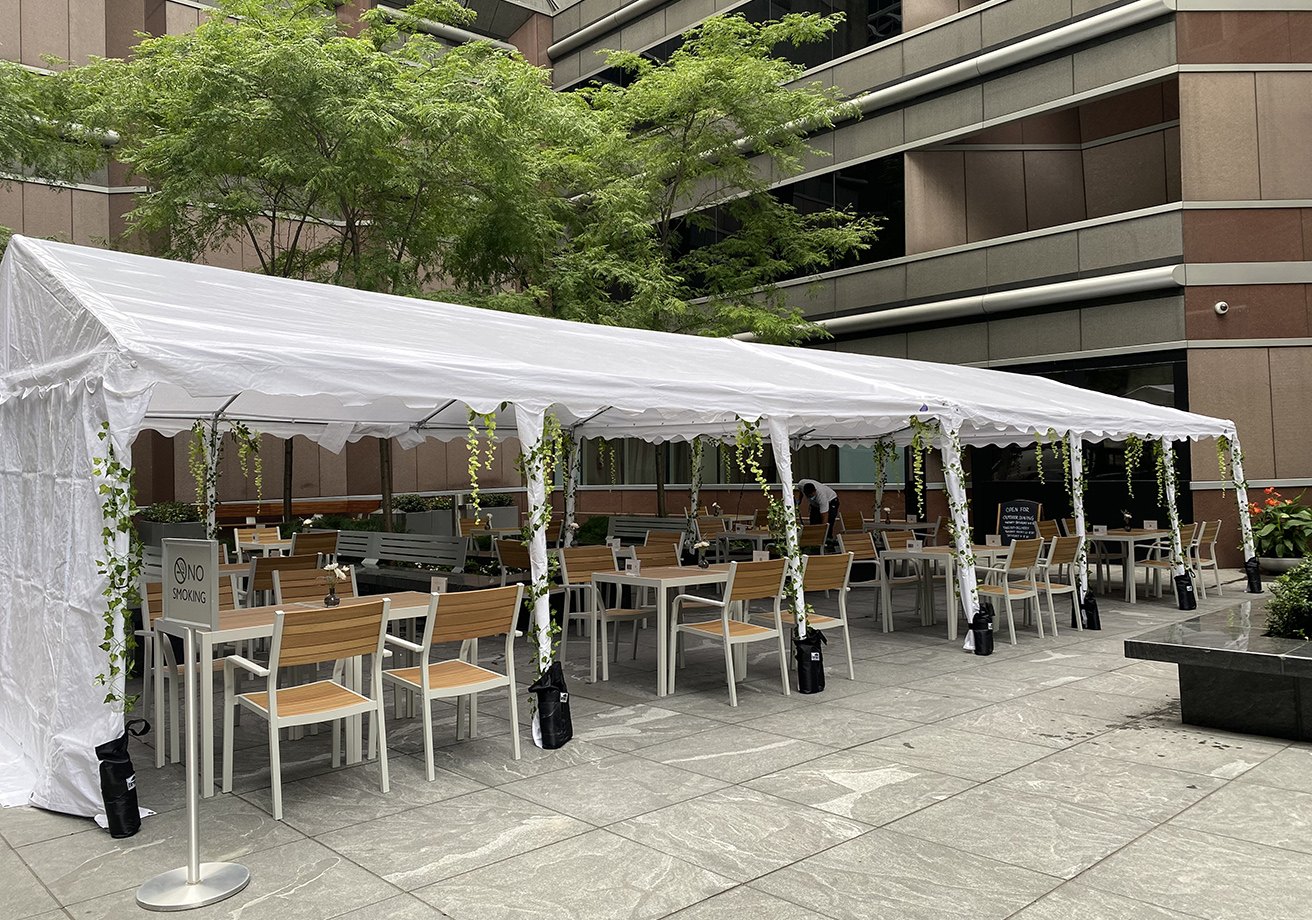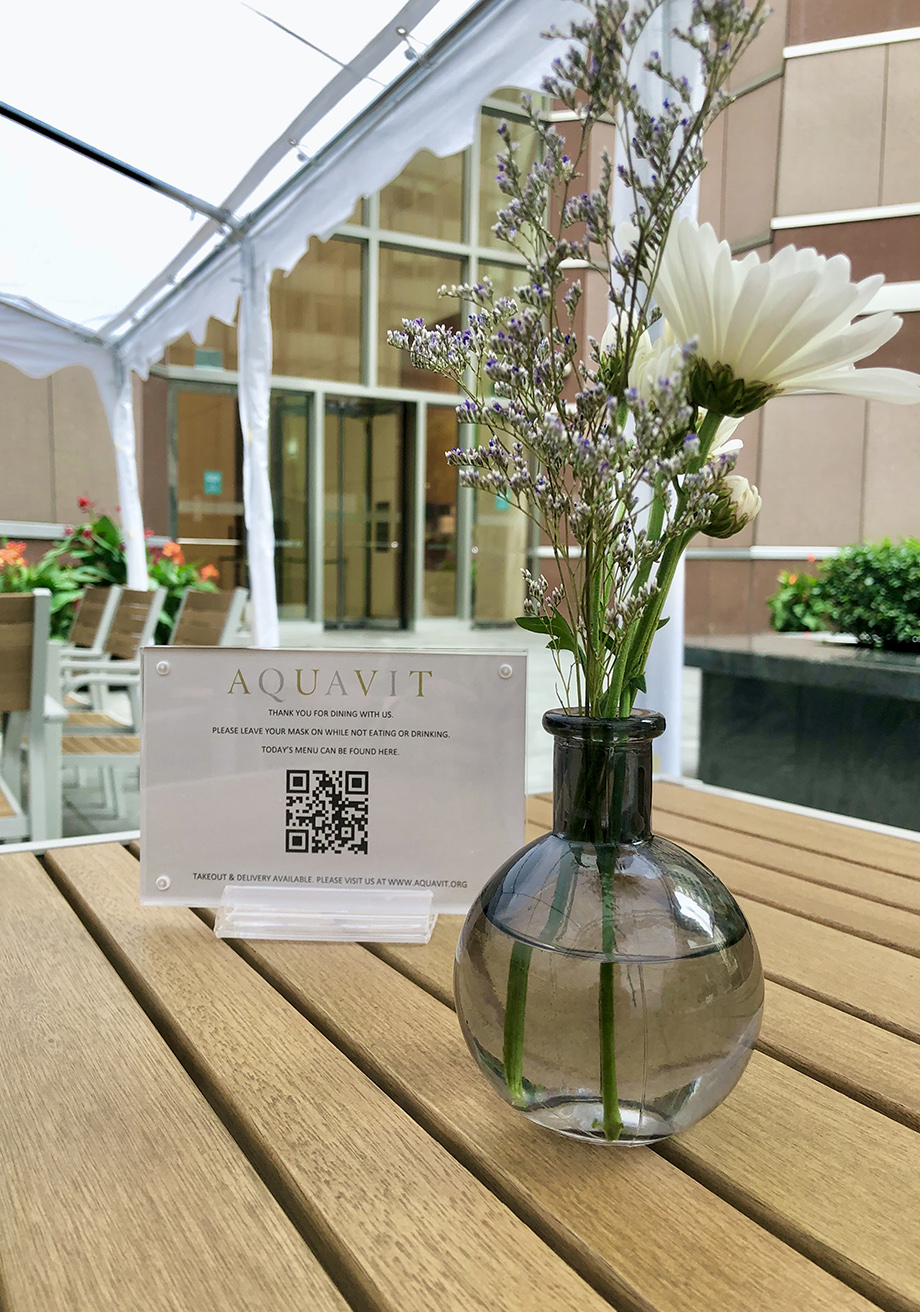The challenges of 2020 showed the incredible grit and ingenuity of the restaurant community, who continually pivoted to keep their businesses alive. Innovation and experimentation were more necessary than ever, so restaurants tried many new things, and some worked better than anyone expected: Diners became used to certain accommodations and conveniences they hadn’t had in the past, and restaurants invested in equipment and technology that was too expensive to leave behind.
Even after we step into a post-pandemic future, the restaurant scene has been forever changed — the COVID crisis taught the whole industry important lessons that will endure through 2021 and beyond. Here are a few of the positive transformations wrought by COVID that will outlive the crisis, according to restaurateurs themselves.
1. Packaged foods

During 2020, many chefs and restaurateurs found themselves packaging their signature items and selling them online. Some have even created their own mini-line of frozen foods or identified their most travel-hardy items and made them available for shipping across the United States. Chef-made meal kits became a staple that will likely stick around. “We began shipping our gluten-free and vegan cakes nationwide, as well as our microbiome-friendly soups, jams, and more,” Mee McCormick, chef and founder of Pinewood Kitchen & Mercantile in Nunnelly, TN, says.
Many restaurants have done the leg work of setting up new online ordering and shipping systems during the pandemic. Takeout options have been expanded and enhanced across the board, and there’s been a boom in restaurant meal kits. You can even order takeout and meal kits right through the OpenTable app. It just makes sense to continue using these options even after diners return to restaurants en masse later this year.
2. Better, more frequent communication
Relationships are a big part of what makes a restaurant special. Regulars know the servers, bartenders, and managers at their favorite places. The best hospitality pros understand how to create an immediate connection with diners, even if their visit is a one-off event. With these in-person points of contact limited, restaurants have had to double down on other ways to keep their customers close. Often, that shift has meant more virtual togetherness.
For chef Elizabeth Blau of Honey Salt restaurant in Las Vegas, maintaining customer loyalty has been a top priority throughout the pandemic. “Even when our dining room was closed, we remained in constant communication with our customers through weekly email newsletters and social media,” she says.
It’s a practice she plans to maintain even as the pandemic subsides. Communicating with customers helps keep a restaurant top of mind in good times as well as bad. Last year, OpenTable added a feature that allows restaurants and diners to be in two-way communication after diners make a reservation, making it convenient for diners to ask questions and make requests, and vice versa. In 2021, we’ll likely see more restaurants taking advantage of this feature to make diners aware of policies or new procedures.
3. A more flexible hospitality
Before the pandemic, some chefs could be reluctant to make changes to a dish for a diner’s preference — for years, the idea that a chef’s creative vision should never be marred at a diner’s whim prevailed in certain circles. But as the crisis curtailed business dramatically at restaurants across the board, each individual diner became more valuable than ever, and flexibility replaced culinary dogma.
“We broke the old regime rule of chefs refusing to make substitutions. We do our best to accommodate each person’s needs,” Pinewood Kitchen & Mercantile‘s McCormick says. This means adapting to a wide range of modifications for people with different allergies, nutrition protocols, and preferences. McCormick calls it “the new hospitality.” “Gluten free? We got you. Vegan? Easy. Paleo? We are prepared. Keto? No problem,” she says.
Going forward, this heightened emphasis on personalized hospitality may in some cases take over for those “no substitution” policies as restaurants fight for each and every customer. It’s all the more reason that diners must show extra gratitude toward restaurants right now as they work increasingly hard to deliver above-and-beyond hospitality. These changes, even if seemingly small, come with significant labor from restaurants.
4. A focus on a more diverse, healthier working environment
Just because diners will get a more personalized hospitality doesn’t mean it will be at the expense of workers, who have made it clear that there need to be broad changes to the restaurant labor model. Like many others, the restaurant industry examined its own inequality and lack of diversity in 2020, and no look at the future of restaurants can exclude the racial and economic justice movements the world saw accelerate last year.
“[My ultimate vision for the industry in five or ten years is] that it’s treated as a respected profession,” says Kwame Onwuachi, chef and author of Notes from a Young Black Chef. Jobs that provide better compensation and more professionalized benefits are what’s needed to attract and retain a more diverse community. “My [hope is that] there is much more diversity in every aspect of our industry,” says Susan Feniger, chef and owner of Socalo and Border Grill.
Intertwined with the goal of greater diversity is the goal of creating a healthier atmosphere, one in which all restaurant workers feel welcome, safe, and supported. That means standard benefits such as paid time off, health benefits, and a work-life balance that makes grueling 16-hour-days a thing of the past. Those changes would cause the cost of dining out to trend upward in the future, but that is a good and necessary thing. “We need to be able to raise our prices in order to do that … [We need] to make sure our employees are taken care of monetarily as well as mentally.” says Onwuachi.
In 2021, we may see restaurants raise their prices as they grapple with these topics.
5. Swanky sidewalk cafes

Outdoor dining took on incredible new importance in 2020, often being the lifeline for restaurants. In places where indoor dining was off limits for much of the year, restaurants went to great lengths to create safe, comfortable atmospheres for al fresco tables. Whether that meant adding heat lamps, creating “streeteries,” building partial enclosures, investing in seat warmers, or some combination, outdoor dining leveled up. Many cities celebrated the positive energy and life it brought to the streets.
“The main game changer and lifeline was the birth of citywide outdoor dining, which made it possible for the kitchen to keep cooking throughout the summer and resulted in a vibrant dining streetscape,” Håkan Swahn, owner of Aquavit in New York City, says. Other restaurateurs agree: “This is the one positive of this pandemic. Sitting outside can be a very enjoyable experience for guests and an opportunity for the restaurateurs,” says Paolo Del Gatto, operations manager at Socarrat Paella Bar, also in New York.
With these build outs and improvements in place — which were a considerable investment for restaurants — comfortable, year-round outdoor dining will continue to please restaurant owners and diners alike, so long as city ordinances allow it. (Check out OpenTable’s heated outdoor dining guides to find a toasty warm spot near you.)
6. Contact-free payment
Everyone loves convenience. The events of 2020 underscored this fact, as many restaurants shifted to more user-friendly online ordering and payment services to enable contactless transactions. Honey Salt’s Blau believes contact-free payment and menu solutions such as QR codes will be with us beyond the pandemic because of its ease for diners — both in the restaurant and for takeout. Prepaying for takeout and unique experiences and events are also likely here to stay — both offerings that are available on OpenTable.
7. Smaller, smarter menus
Restaurants have taken a very hard look at what works and what doesn’t in all aspects of the business. Menus have been scrutinized in terms of diner preferences, sales, labor costs, and food costs. Some places have found culling the number of menu items offered has been necessary to keep costs in check.
“We’ve decreased the size of the menu by 30 percent,” says Sachin Mahajan, managing partner at Karma Modern Indian restaurant in Washington, D.C. Turns out the benefits go beyond savings: Many diners prefer a more tightly written menu, as it shows the restaurant is now serving its best and most beloved dishes. Plus, diners experience less decision fatigue.
“The pandemic has allowed us to spend more time with guests in some cases. We’re getting more valuable feedback,” says Mahajan. And the diners that have continued visiting his restaurant are the most valuable ones for any restaurant, as it’s been the diehard regulars who have helped reshape the menu at Karma Modern Indian, according to Mahajan. The smaller, strategically designed menus will be a hallmark of post-pandemic dining.
These six shifts are just a handful of ways the restaurant industry has innovated during an unprecedented year. The evolution of restaurants is ongoing, and we’re sure to see many more creative approaches throughout 2021 that will have a lasting and positive impact on the future of dining out.




